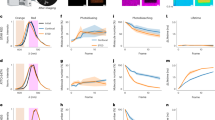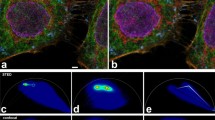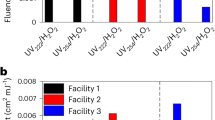Abstract
A NUMBER of methods have been used to record photographically the fluorescence of various substances present on paper chromatograms when excited by ultra-violet light. Markham and Smith1–3 used a system consisting of a quartz mercury vapour lamp and a set of two filters containing chlorine gas and a solution of NiSO4.7H2O and CoSO4.7H2O, respectively. Bernasconi, et al.4 used a mercury vapour lamp, a red-purple filter, a cobalt sulphate and nickel sulphate filter, and a 3 mm. thick piece of ‘Plexiglass’. Abelson5 used an ultra-violet hand lamp with a Kodak 2A gelatin filter enclosed in glass plates.
This is a preview of subscription content, access via your institution
Access options
Subscribe to this journal
Receive 51 print issues and online access
$199.00 per year
only $3.90 per issue
Buy this article
- Purchase on SpringerLink
- Instant access to full article PDF
Prices may be subject to local taxes which are calculated during checkout
Similar content being viewed by others
References
Markham, R., and Smith, J. D., Biochem. J., 45, 294 (1949).
Smith, J. D., and Markham, R., Biochem. J., 46, 509 (1950).
Markham, R., and Smith, J. D., Nature, 163, 250 (1949).
Bernasconi, R., Sigg, H. P., and Reichstein, T., Helv. Chim. Acta, 38, 1767 (1955).
Abelson, D., Nature, 188, 850 (1960).
Cox, R. I., Nature, 189, 638 (1958).
Author information
Authors and Affiliations
Rights and permissions
About this article
Cite this article
HERMAN, R., CLAYTON, L. & BRUTON, J. Preparation of Ultra-Violet Fluorescent Photographs of Steroids. Nature 193, 169–170 (1962). https://doi.org/10.1038/193169a0
Issue date:
DOI: https://doi.org/10.1038/193169a0
This article is cited by
-
Effect of Phosphoric Acid on Digitalis Compounds
Nature (1962)



